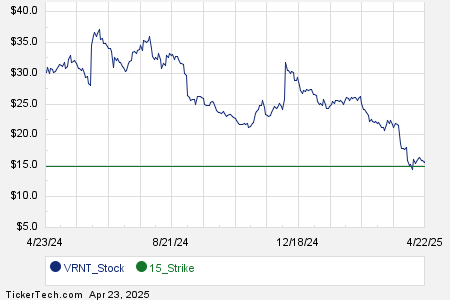Dollar Strengthens Amid Easing US-China Trade Tensions
The dollar index (DXY00) increased by +0.87% on Wednesday. This rally occurred as President Trump eased the tough trade rhetoric against China, stating he plans to be “very nice” during upcoming talks and that tariffs would decline if a trade deal is reached. Additionally, confidence in the dollar received a boost when President Trump confirmed late Tuesday that he does not intend to fire Fed Chair Powell.
Support from Federal Reserve Comments and Economic Data
Hawkish remarks from Fed Governor Kugler also bolstered the dollar. She expressed support for maintaining steady interest rates until inflation risks subside. The dollar extended its gains following better-than-expected U.S. new home sales and manufacturing PMI reports.
In April, the S&P manufacturing PMI rose unexpectedly by +0.5 to 50.7, exceeding forecasts of a drop to 49.0. Similarly, March new home sales surged by +7.4% month-over-month to reach a 6-month high of 724,000, outperforming expectations of 685,000.
Governor Kugler warned that tariffs could exert upward pressure on prices and have a more significant economic impact than previously anticipated. She reiterated her stance on holding interest rates steady until inflation risks diminish.
The Fed’s Beige Book reported neutral signals for the dollar, indicating little change in U.S. economic activity before April 14. Employment conditions were mostly steady, with only modest to moderate price increases reported.
Looking Ahead: Key Economic Reports
This week, market attention will focus on any adjustments to U.S. trade policies. Thursday will see the release of the March capital goods new orders (non-defense ex-aircraft and parts) report, expected to show an increase of +0.1% month-over-month. Additionally, March existing home sales are anticipated to decline by -2.8% to 4.14 million.
On Friday, the revised University of Michigan April consumer sentiment index is forecasted to remain unchanged at 50.8. Currently, the market assigns an 8% chance for a -25bp rate cut following the May 6-7 FOMC meeting, down from a chance of 30% last week.
Euro Under Pressure as ECB Signals Easing
The EUR/USD exchange rate fell by -0.88% on Wednesday, primarily due to a stronger dollar. Comments from ECB Governing Council member Nagel suggested that Europe is experiencing stagnation, attributed to the impacts of U.S. tariffs. Further losses in the euro accelerated following dovish comments from member Villeroy de Galhau, who indicated low inflation risks and the likelihood of additional ECB rate cuts.
Despite this, the Eurozone S&P manufacturing PMI in April rose unexpectedly to a 2-1/4 year high of 48.7, surpassing the forecast of 47.4. However, the composite PMI fell by -0.8 to 50.1, slightly missing expectations of 50.2.
Nagel did caution about a risk of recession particularly for Germany, while Villeroy argued for continued ECB easing, citing the lack of inflationary pressure.
Swaps currently imply an 86% probability of a -25bp rate cut by the ECB in the June 5 policy meeting.
Yen Weakens as Dollar Gains Ground
The USD/JPY exchange rate climbed by +1.24% on Wednesday. The yen fell to a one-week low against the dollar amidst the strengthening dollar and positive sentiment following comments from President Trump regarding Fed leadership. An easing of U.S.-China trade tensions contributed to a rally in the Nikkei Stock Index, further diminishing demand for the yen as a safe-haven asset.
Additionally, Treasury Secretary Bessent highlighted that the U.S. does not seek currency targets in trade negotiations with Japan, adding to the yen’s struggles. Japan’s February tertiary index remained unchanged month-over-month, failing to meet the +0.4% expectation. However, the Japan April Jibun Bank manufacturing PMI rose by +0.1 to 48.5, and the services PMI increased by +2.2 to 52.2.
Precious Metals: Mixed Outcomes Amid Dollar Strength
June gold (GCM25) settled down -125.30 (-3.66%), while May silver (SIK25) closed up +0.642 (+1.96%). Precious metals saw mixed results on Wednesday, with sharp declines in gold prices driven by a stronger dollar and reduced demand for safe-haven assets following Trump’s reassurances regarding Fed Chair Powell.
In addition, a notable rally in stocks curtailed safe-haven buying in response to optimism surrounding the potential easing of U.S.-China trade tensions. Lower Treasury note yields on Wednesday offered some support for precious metals. While geopolitical tensions in the Middle East bolster safe-haven demand, stronger-than-anticipated manufacturing PMI reports from the U.S., Japan, and the Eurozone positively influenced silver prices, suggesting improved demand for industrial metals.
On the date of publication, Rich Asplund did not have positions in any of the securities mentioned in this article. All information and data in this article is solely for informational purposes. For more information, please view the Barchart Disclosure Policy.
More news from Barchart
The views and opinions expressed herein are the views and opinions of the author and do not necessarily reflect those of Nasdaq, Inc.


